Cognition Without a Cortex
Neuroscientist Onur Güntürkün on mammalian brain, ravens’ ability to plan into future and why birds are so int...
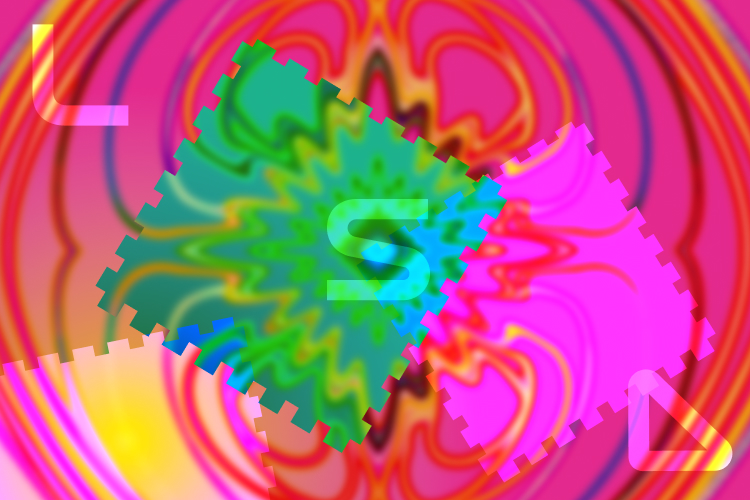
LSD is an acronym for the German chemical name Lysergsäure-diethylamide, or in English, lysergic acid diethylamide. It is the diethylamide of lysergic acid, which is obtained by hydrolysis of ergot alkaloids produced by various species of ergot (Claviceps) fungus. This fungus parasitizes certain grains such as rye, and the alkaloids it produces cause constriction of the peripheral blood vessels (called vasoconstriction). In the Middle Ages, the consumption of bread made with grains contaminated with ergot fungus could produce severe vasoconstriction, leading to gangrene in the fingers and toes and an intense burning sensation known as St. Anthony’s fire. Gangrenous fingers or toes actually took on a burnt-black appearance and would fall off. St. Anthony was the patron saint of persons suffering from ergot poisoning.
Consumption of ergot also could produce hallucinations, and one hypothesis is that the Salem Witch trials, a series of hearings, prosecutions, and executions of people accused of witchcraft in colonial Massachusetts between February 1692 and May 1693, was a result of weather conditions in New England that led to ergot infestation of the grain used to make bread. Consumption of this bread led people to experience hallucinations, hearing voices, and seeing things. Ergot alkaloids also can produce powerful contractions of the uterus and could lead to miscarriages in pregnant women. Extracts of ergot were actually developed for treating postpartum hemorrhage. A number of ergot alkaloids have found modern medical use in treating various medical conditions such as postpartum hemorrhage and migraine.
Sandoz Laboratories in Basel, Switzerland, had been working on the isolation and purification of ergot alkaloids in the early twentieth century. A brilliant young natural products chemist named Albert Hofmann had been working for Sandoz on other natural products. He asked the research director if he could work on ergot alkaloids and their derivatives. His research advisor approved his request but warned that the chemistry of ergots was very complex, and the compounds were not very stable. Dr. Hofmann, however, was a very talented chemist. He developed efficient methods to remove the complex peptide portions of the ergot alkaloids and replace them with simple amines. He synthesized a large series of lysergic acid amides and had them tested by the Sandoz pharmacologists. One of the compounds, the 25th in the series, was lysergic acid diethylamide (LSD-25) and was synthesized in 1938.

Albert Hofmann had envisioned that it might be a respiratory stimulant and patterned it after coramine, a single-ring compound related to nicotinic acid, which had a diethylamide. He apparently reasoned that attaching the diethylamide to lysergic acid might afford a very potent respiratory stimulant, based on the known high potency of ergot alkaloids in general. The Sandoz pharmacologists, however, reported that they found nothing remarkable in their tests with LSD-25. It was some four years later, in 1943, as Dr. Hofmann was having his usual lunch in the laboratory, that he was suddenly struck by the notion, or intuition, that the pharmacologists had missed something about LSD-25, and he prepared a new sample to resubmit it for a second pharmacological evaluation.
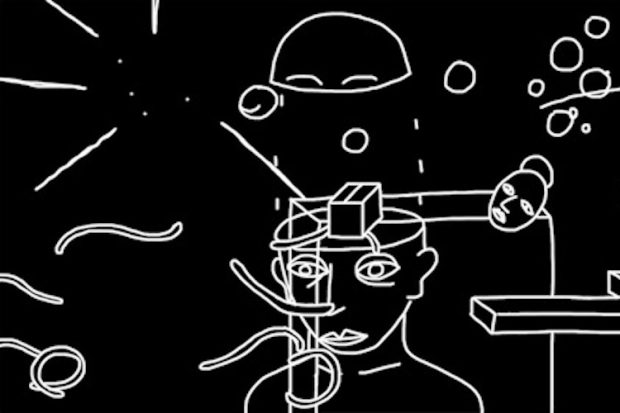
On Friday, April 16, 1943, he developed a strange intoxication and had to leave work early. He was overcome by strange feelings and powerful imaginations. In the report to the Head of the Pharmaceutical Department, Professor Stoll, he reported that he had to go home early, and, upon arrival, he laid down and experienced ‘an uninterrupted stream of fantastic images of extraordinary plasticity and vividness and accompanied by an intense, kaleidoscope-like play of colors’. On Monday, April 19, he decided to carry out a self-experiment to determine whether the effects could have been caused by the LSD he had been working with on the previous Friday. Knowing that the ergot alkaloids were very potent and toxic, he determined to administer a solution of LSD in water to himself that contained 0.25 milligrams of LSD, which he considered to be a low dose. He ingested the LSD at 4:20 pm, but by 5:00 pm, he was unable to work and decided to leave work and bicycle home. He says he had great difficulty in speaking coherently, his field of vision swayed before him, and objects appeared distorted, like images in curved mirrors. He had the impression of being unable to move from the spot. Once he was at home, the physician was called.
By the time the doctor had arrived, the peak of the crisis had passed. He remembers the most outstanding symptoms as vertigo and visual disturbances. The faces of those around him appeared as grotesque, colored masks. He felt restless, alternating with paralysis, with a heavy feeling in his entire body. He retained a clear recognition of his condition, where he sometimes observed, in the manner of an independent, neutral observer, that he“shouted half insanely or babbled incoherent words. Occasionally I felt as if I were out of my body.
He reported this experiment to Professor Stoll, who found the account rather remarkable and somewhat unbelievable. But to verify the effect, and to be cautious, Professor Stoll and several other colleagues ingested only 0.1 mg of LSD. We now know that 0.1 mg of LSD (tartrate) is a standard clinical dose that induces profound effects. After that, Sandoz began to distribute LSD to interested psychologists and medical professionals as a drug that might give them insight into the mind of persons who were mentally ill.
There are both in vitro and in vivo experiments. In vitro experiments look at the effect of LSD on receptors; how tightly does it bind to a particular receptor, which receptors does it bind to, and does it activate those receptors? In vivo experiments look at the effects of LSD on various organisms, and some that have been studied include Japanese fighting fish, zebra fish, fruit flies (Drosophila melanogaster), mice, rats, cats, dogs, and humans. They can produce various effects. For example, they can change the way a fish swims, disrupt visual processing in fruit flies, cause mice to “twitch” their heads rapidly; cats experience a rage response, dogs act confused and whine, etc. Humans are most interesting, although not a lot of human research was done after about 1970 up until about ten years ago. In humans, various measures can be studied, such as changes in visual phenomena, changes in the perception of time, social interactions, and lots of behavioral aspects.
Psychedelics such as LSD are psychoactive substances that powerfully alter perception, mood, and a host of cognitive processes. One’s imagination can be powerfully enhanced, a rapid flow of ideas and thoughts is experienced, and music often induces colorful kaleidoscopic images that dance in synchrony with the music, especially with the eyes closed. This effect is known as synesthesia. One can have the sense that insight into the very nature of reality itself is amplified by LSD or other psychedelics.
The origin of psychedelics predates written history, and they were employed by early cultures in a variety of sociocultural and ritual contexts. Jaffe (1990) provided a definition that is most consistent with the ritual use of psychedelics in other cultures. He stated, “…the feature that distinguishes the psychedelic agents from other classes of drugs is their capacity reliably to induce states of altered perception, thought, and feeling that are not experienced otherwise except in dreams or at times of religious exaltation.” Daniel X. Freedman, one of the early pioneers of LSD research, in 1968 stated, “…one basic dimension of behavior… compellingly revealed in LSD states is ‘portentousness’ — the capacity of the mind to see more than it can tell, to experience more than it can explicate, to believe in and be impressed with more than it can rationally justify, to experience boundlessness and ‘boundaryless’ events, from the banal to the profound.” Not surprisingly, in view of these definitions, there is now substantial clinical evidence that psilocybin-induced mystical-religious experiences cannot be distinguished, by objective criteria, from spontaneously-occurring ones.
Psychedelics have a unique and powerful ability to affect the human psyche. They may alter one’s concepts of reality, may change one’s views on life and death, and can provoke and challenge one’s most cherished beliefs. In contrast to virtually every other class of CNS drug, where the action is usually predictable, the effects of hallucinogens such as LSD are heavily dependent on the expectations of the user (“set”) and the environment (“setting”) in which the use takes place. No one experienced with these substances would fail to consider set and setting as primary determinants of the experience. Thus, expectations and environments that would foster religious or spiritual experiences increase the probability of the drug producing such an effect. By contrast, recreational use in unsupervised settings can often lead to panic, anxiety, or transient psychosis.
Psychedelics are agonists or partial agonists at the brain serotonin 5-HT2A receptor subtype. That means that they stimulate to a greater or lesser extent, these brain receptors. This receptor is a member of the Family A type G protein-coupled receptors (GPCRs) and is widely expressed throughout the brain, being particularly dense on apical dendrites of layer five cortical pyramidal cells. Its canonical signaling occurs through coupling to Gαq, activating phospholipase C, resulting in phosphoinositide hydrolysis, formation of diacylglycerol, and leading mobilization of intracellular calcium.
Activation of 5-HT2A receptors on glutamatergic neurons within the brain generally does not lead to depolarization and the generation of action potentials; the cells simply become more excitable. The claustrum has the highest expression of 5-HT2A receptors in the brain, but there is also significant expression in Layer 5 in the medial prefrontal cortex, the reticular nucleus of the thalamus, ventral tegmental area, the locus coeruleus, the amygdala, and a few other key regions. In addition, psychedelics suppress raphe cell firing in the brain stem either directly (LSD and similar compounds) or indirectly (by phenethylamines), an effect that also leads generally to cortical cell excitation. Widespread changes in neuronal excitability resulting from the activation of 5-HT2A receptors in these key brain regions would be expected to have marked effects on cognition.

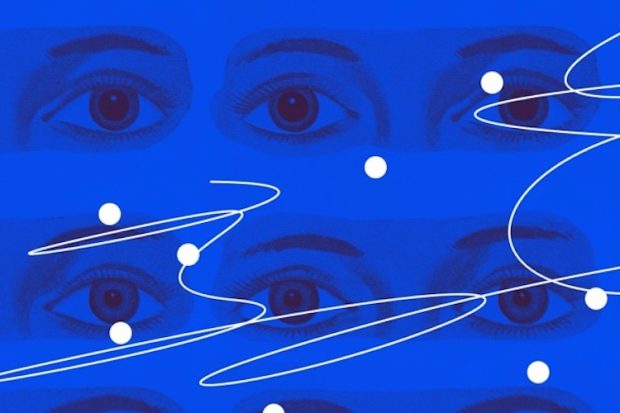
In 2016, Martin and Nichols purified psychedelic-activated neurons from rat brains for the first time and demonstrated that psychedelics directly activated a small subset of 5-HT2A-expressing excitatory neurons (< 5% of the total brain neuronal population) in key brain regions, including the prefrontal cortex and the claustrum. These neurons activated by psychedelics expressed significantly higher levels of the gene for the 5-HT2A receptor and are, therefore, more sensitive to psychedelics than other neurons. They also found that the nature of how psychedelics activated these neurons differed, depending on the specific brain region where they resided. Martin and Nichols hypothesized that this small population of directly responding neurons represents a “trigger population” and that activation of these neurons initiates the cellular events leading to recurrent activity, cortical network destabilization, and the host of perceptual and cognitive behaviors associated with psychedelics. For example, these activated neurons subsequently recruit other select cell types, including small subpopulations (< 10%) of somatostatin and parvalbumin inhibitory GABAergic interneurons. The differential activation of subsets of both excitatory and inhibitory neurons to disparate extents than would normally occur in a normal conscious brain is predicted to alter the basic function of a given brain area and its ability to communicate with other regions. Because distinct regional cellular populations respond differently to psychedelics, different brain regions will be more or less sensitive to their effects. These cellular effects of psychedelics, therefore, likely underlie the alterations in brain network communication observed by imaging studies.
Psychedelics are considered physiologically safe and do not produce dependence or addiction. There are no recorded overdose deaths due to ingestion of LSD at reasonable dosages. The most common adverse effect of LSD occurs in unsupervised recreational settings, where panic and anxiety can occur, sometimes requiring hospital attention. Generally, these adverse effects are not long-lasting and subside with gentle counseling and assurance of the user that the effect will wear off. Although LSD can catalyze the onset of psychiatric illness in persons with a predisposition to mental disorders, it is generally considered that long-lasting psychiatric problems do not occur in those who are mentally healthy.
A disorder known as hallucinogen persisting perceptual disorder (HPPD) occurs in a very tiny percentage of users. In HPPD, the person experiences a recurrence of the LSD effects long after the drug has left the body. The basis for this disorder is unknown, and there is no documented treatment for it although there are a few case reports suggesting that the antiseizure medication lamotrigine can alleviate the symptoms. LSD has been used to treat alcoholism with some success. It was also recently employed successfully to treat anxiety and depression in patients with life-threatening illnesses.
There are several analogs of LSD that have recently appeared on the illicit drug market. One of the first to appear was called LSZ. In this analog, the two diethyl groups of LSD have been chemically modified by incorporation into a four-membered azetidine ring. This ring has two appended methyl groups (i.e., 2,4-dimethyl azetidine). This dimethyl azetidine has three different stereoisomers, and it is only the isomer where the two methyl groups are trans to each other, with the stereochemical designation of 2S, and 4S, that has LSD-like effects at about the same potency as LSD itself.

Another LSD analog that has appeared on the illicit market is 1P-LSD. In it, the indole NH has been derivatized as an N-propionyl. Recent studies have shown that the propionyl group is removed by metabolism in the body to reveal LSD. 1P is somewhat less potent than LSD itself but appears to have qualitatively the same effect as LSD.
Two additional LSD analogs that have appeared are known as allylad and ethlad. In these two, the methyl group at the 6-position nitrogen of LSD has been replaced with an allyl or ethyl group, respectively. Studies of these compounds in rats revealed that they were about as potent as LSD, and in humans, it appears that both of them are about as potent as LSD dosage-wise, although the ethyl analog ethlad may be somewhat more potent. Recently, there has also been a report of 1P-ethlad being available. Like 1P-LSD, this analog would be ethlad, where the indole NH has been derivatized as propionyl. Virtually nothing is known about the psychopharmacology of this analog.
Studies of how LSD affects brain function have begun to examine functional connectivity in the brain. LSD has been used in brain imaging both in the UK and Switzerland. LSD (and other psychedelics) profoundly alter brain connectivity, disrupting normal modes of local connectivity and creating new long-range connectivities. Clinical studies have begun to examine how LSD affects emotions, empathy, suggestibility, and perception, among others. It is clear that coupling the use of psychedelic drugs with powerful new brain imaging technologies will help us learn a lot about how the brain is connected and its internal functional architecture.
Studies with psilocybin, another psychedelic, have found that a single treatment can alleviate anxiety and depression associated with a life-threatening diagnosis. A study in the UK has shown that treatment with psilocybin can alleviate depression in chronically depressed patients. Early pilot studies have also found that the same treatment can disrupt addiction to alcohol and tobacco. We have every reason to believe that LSD has the same capacity for healing, but social pressures have slowed comparable studies with LSD. But assuming that psychedelics have the ability to produce healing in so many different ways, the question must be asked, “How does that occur?” If we can understand how a single treatment with a powerful psychedelic like psilocybin or LSD can have lasting beneficial effects, detailed investigations into how that happens will be warranted. In the process, we are likely to discover many new aspects of brain function, as well as the underlying basis for a number of psychiatric disorders. That may usher in a new era of treatments for mental illnesses that up to now are only treated poorly, if at all. In essence, the future may bring relief for many that at present, suffer with no hope for a better life. The early promise from the 1950s that LSD might be a wonder drug and a new technology for psychiatry may finally be realized.
Edited by Ksenia Vinogradova
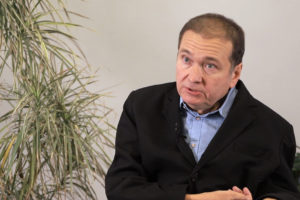
Neuroscientist Onur Güntürkün on mammalian brain, ravens’ ability to plan into future and why birds are so int...
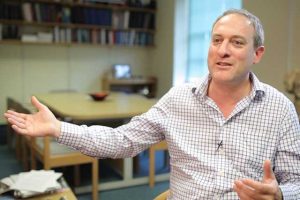
Neuroscientist Neil Burgess on the discovery of place cells, spatial memory, and experiments with functional n...

Psychologist Daniel Mullensiefen on research in musical abilities and the question of nature and nurture